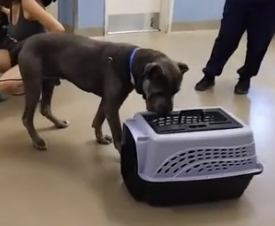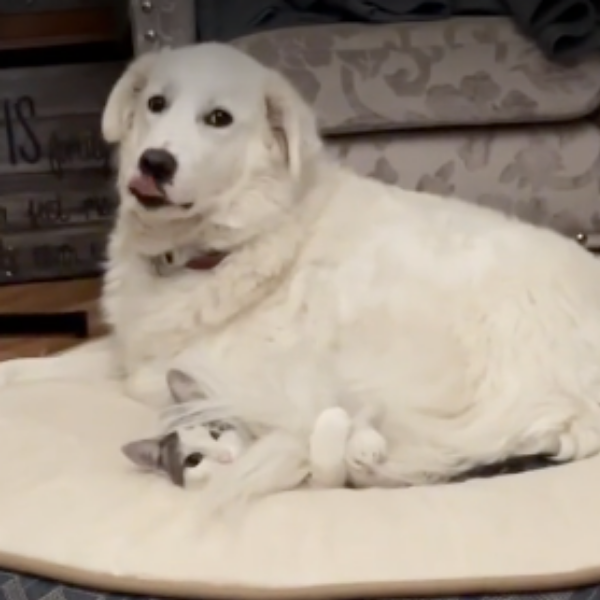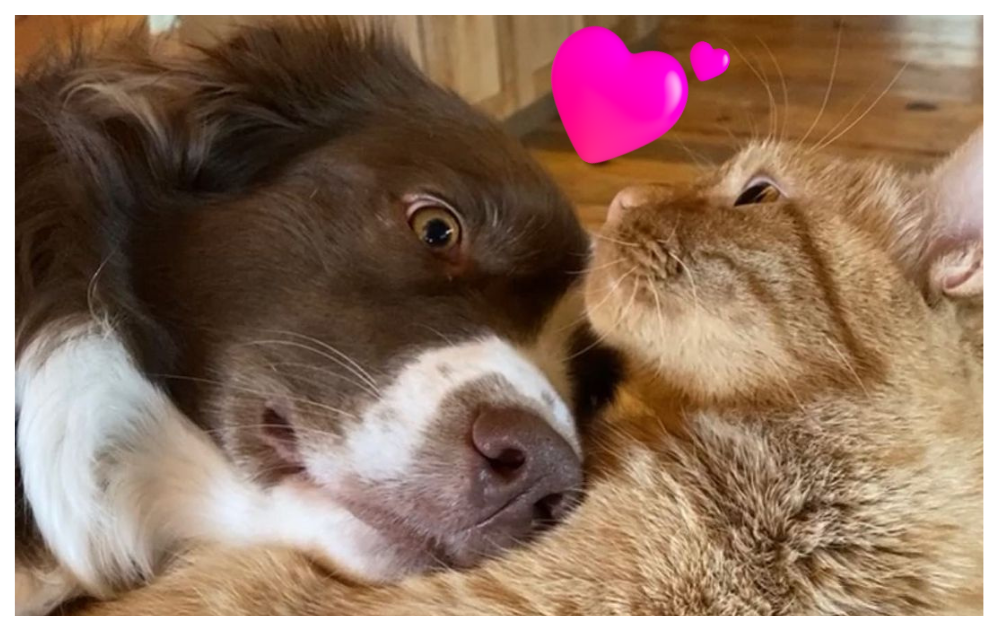The Cat Test – A Feline-Friendly Guide to Finding the Perfect Canine Companion
If you’re thinking about adopting a dog, but you already have a cat, it’s important to make sure that the two animals will get along. One way to do this is to perform a cat test.
A cat test is a simple procedure that can help you assess a dog’s reaction to cats. This test, while not an absolute predictor, provides valuable insights into whether a dog is potentially reactive or aggressive towards feline friends, allowing prospective pet owners to make informed choices.
Understanding the Cat Test

The Cat Test involves a controlled introduction of a cat to the presence of the dog in a safe and secure manner. To conduct this test, you will need a closed-off portable kennel to house the cat. It is crucial to prioritize the safety and comfort of both the cat and dog during the process.
Step-by-Step Guide to Conducting the Cat Test
- Secure the Environment: Choose a quiet and neutral location to conduct the test. The area should be free from distractions, providing a stress-free environment for both the cat and dog.
- Introduce the Kennel: Place the cat inside the closed portable kennel. Ensure the kennel allows the cat to observe the dog while maintaining a safe distance.
- Observe the Dog’s Behavior: Gently introduce the dog into the designated space. Observe the dog’s reaction towards the presence of the cat in the kennel.
- Neutral Response: A positive sign is when the dog displays mild curiosity or disinterest in the cat. Sniffing the kennel without excessive excitement or aggressive behavior indicates a potential positive match.
- Warning Signs: If the dog becomes fixated on the cat, barks incessantly, or shows signs of aggression like growling or lunging, caution should be exercised. Such behavior could indicate that the dog might not be suitable for a home with cats.
Here are some additional tips for doing a cat test:
- Make sure the cat is comfortable being around dogs. If the cat is scared or stressed, the test results may not be accurate.
- Choose a quiet room where the dog and cat will not be disturbed.
- Start the test with the dog and cat at a distance. Gradually move the kennel closer to the dog as you see how the dog reacts.
- Be patient and pay attention to the dog’s body language. If the dog seems uncomfortable, stop the test.
Interpreting the Cat Test Results

While the Cat Test provides essential insights into a dog’s initial reaction to a cat, it is crucial to remember that animal behavior is complex and can vary in different contexts. The Cat Test is not a guarantee of future behavior but acts as a preliminary screening tool.
If the dog exhibits concerning behavior during the Cat Test, seeking the guidance of a professional animal behaviorist is highly recommended. They can provide a more in-depth analysis and offer tailored training solutions to address any potential issues.
Here are some additional ways to identify dog aggression toward cats:

- Rigid Stillness: A telltale sign of impending aggression towards a cat is if the dog were to freeze in place and become rigidly still. This signal is very easy to miss but it speaks volumes, as it is an aggressive posture.
- Staring: Dogs that are about to attack will often stare intently at their target.
- Visual Tracking: A dog that is tracking a cat will move his head and eyes to follow the cat’s movements.
- Tail up: A tail held high and wagging stiffly can indicate an aggressive or dominant attitude.
- Hackles raised: The hair on a dog’s back may stand up when he is feeling threatened or aggressive.
- Barking/Whining: Dogs that are about to attack may bark or whine.
- Low Growling: A low growl can indicate that a dog is feeling threatened or aggressive.
- Baring Teeth/Snarling: Dogs that are about to attack may bare their teeth or snarl.
Responsible Adoption: A Priority

Remember, the welfare of both the cat and dog is paramount when considering adoption. Before conducting the Cat Test, it is essential to ensure that the dog has been appropriately socialized and trained. Similarly, if you already have a cat, ensuring they are comfortable around dogs is equally crucial.
Adoption decisions should be made carefully and responsibly. Consult with shelter staff, rescue organizations, or animal welfare experts who can help you find the best match for your home environment and lifestyle.
If Your Dog Is Aggressive Toward Cats
If your dog is aggressive towards cats, there are several things you can do to help. Here are some tips:
The Factors behind Aggressive Behavior
Aggressive behavior in dogs towards cats can be a concerning challenge for pet owners seeking a harmonious multi-pet household. Understanding the underlying factors behind such behavior is crucial in order to implement effective strategies for a safe and peaceful coexistence.
Dogs may display aggressive behavior towards cats for various reasons, including:
1. Fear: Some dogs react aggressively towards cats out of fear, seeking to protect themselves from potential threats they perceive in feline companions.
2. Prey Drive: Certain dogs possess a high prey drive, making them instinctively inclined to chase and attack smaller animals like cats.
3. Jealousy: In some cases, dogs may become aggressive towards cats if they feel their owner’s attention is being monopolized by their feline counterpart.
Addressing Aggressive Behavior: A Step-by-Step Approach
Pet owners who notice aggressive tendencies in their dogs towards cats should take prompt action to address the behavior. Here are some effective steps to consider:
1. Prevent Contact: Initially, it is crucial to limit any direct contact between the aggressive dog and cats. This may entail keeping the dog on a leash during outdoor walks or ensuring cats are separated in a dedicated room when the owner is away from home.
2. Socialization: For dogs displaying fear towards cats, controlled socialization can be beneficial. Gradually introducing the dog to cats in a controlled environment can help them realize that cats are not a threat.
3. Training Techniques: Implementing appropriate training techniques is vital to manage aggressive behavior effectively. These techniques focus on helping the dog control impulses and develop positive interactions with cats.
4. Seek Professional Help: If the issue persists or seems too complex to address independently, seeking assistance from a qualified dog trainer or behaviorist is highly recommended. These experts can assess the root cause of the aggression and create a tailored training plan to rectify it.
Prioritizing Safety: Urgency Matters
Addressing aggressive behavior towards cats is not only essential for fostering a peaceful household but also for the safety of all pets involved. Aggressive encounters can lead to serious harm or trauma to cats, which must be prevented at all costs.
By taking proactive measures and intervening early, pet owners can curb aggressive tendencies and create a safer environment for their feline and canine companions.



